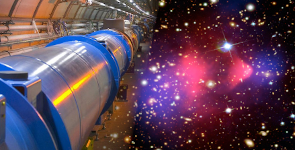Speaker
Description
The Hidden Valley scenario consists of a set of models where the Standard Model is accompanied by a Hidden Sector and connected with it via a heavy mediator or a weak coupling. If realised in nature, the Hidden Valley scenario may result in unusual and little-studied phenomena at the LHC. Under the assumption of a QCD-like confining dark sector, novel experimental signatures emerge, characterized by sprays of particles resembling hadronic jets containing stable invisible dark matter bound states. The resulting signature is characterised by missing momentum aligned with one of the jets, defining an orthogonal phase-space compared to traditional WIMPs searches. These semi-visible jets have been studied theoretically and experimentally in the fully hadronic signature where the unstable composite dark bound states can only decay promptly back to Standard Model quarks. We present a set of new simplified models allowing the decays of the unstable dark bound states to leptons, photons and b-quarks. The new resulting signatures are semi-visible jets characterised by an enhanced presence of non-isolated leptons or photons, coming directly from dark bound states decays or from subsequent decays of tau leptons or B mesons. We discuss possible constraints from previous searches from the CMS and ATLAS experiments, as well as propose possible realistic analysis strategies for Run2 and Run3 leveraging the enhanced leptonic or photon content of these anomalous jets.
